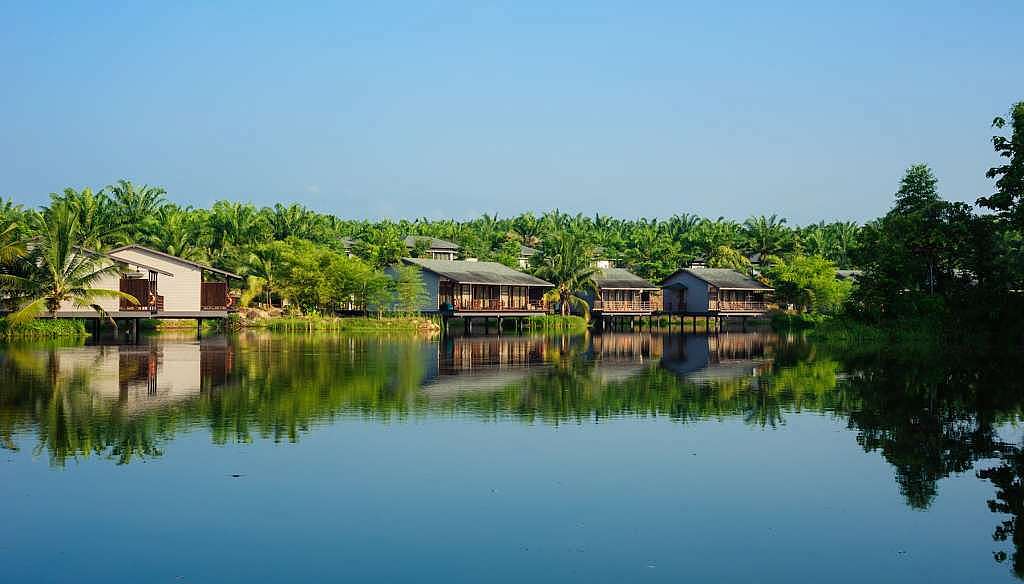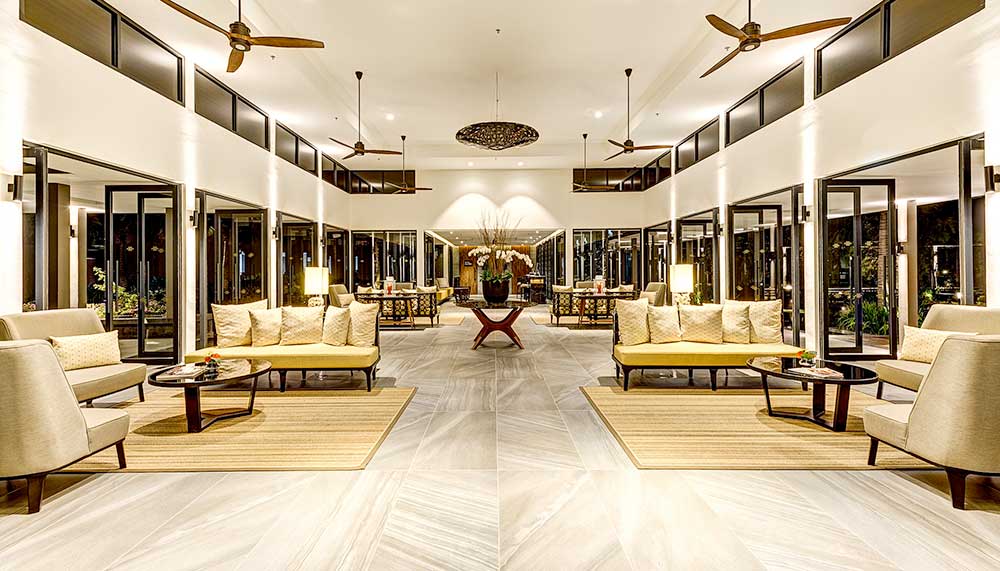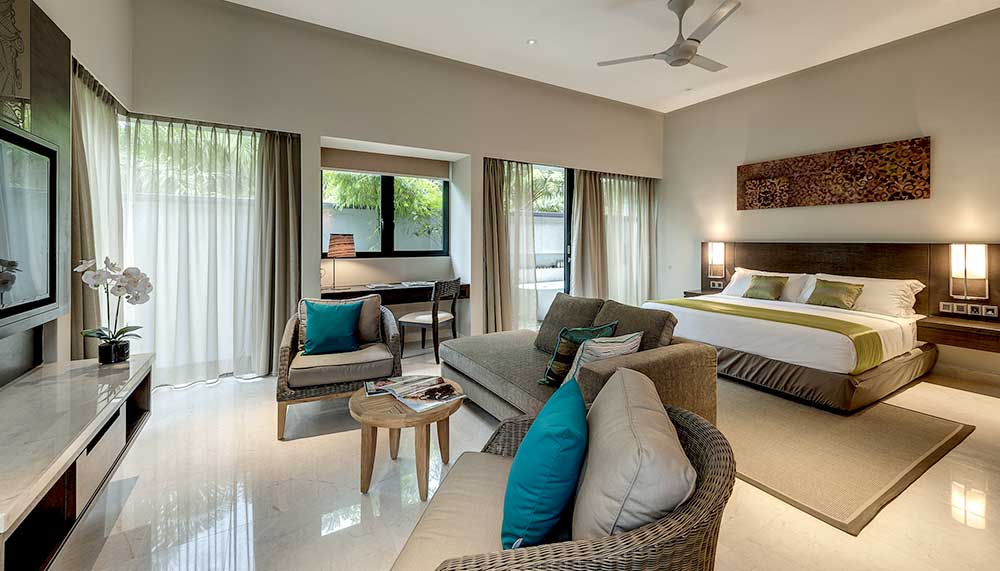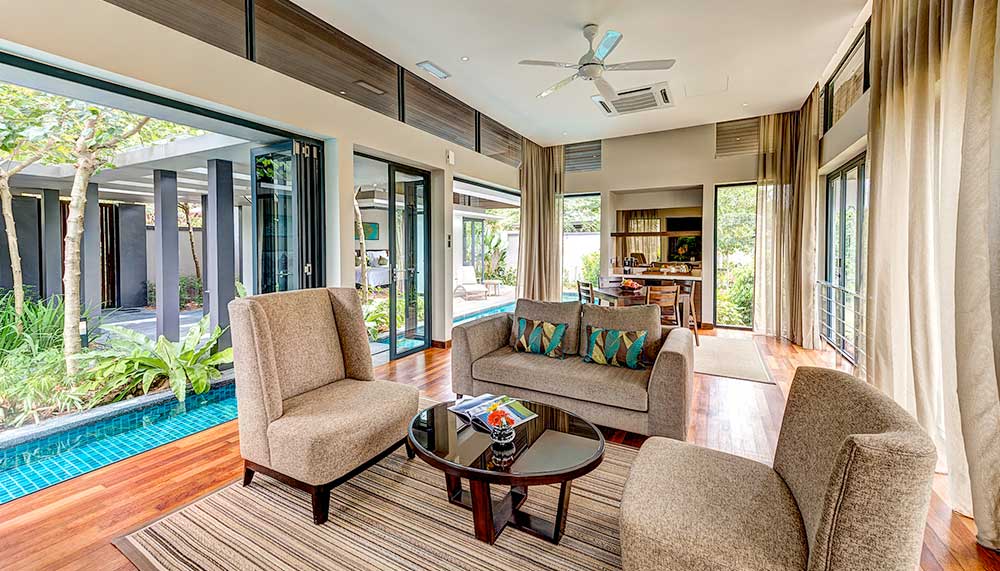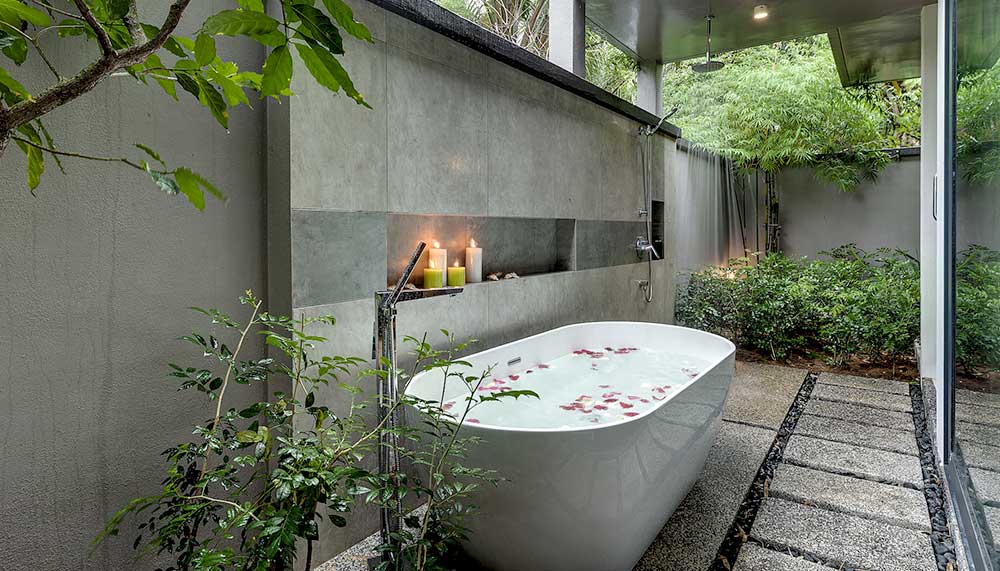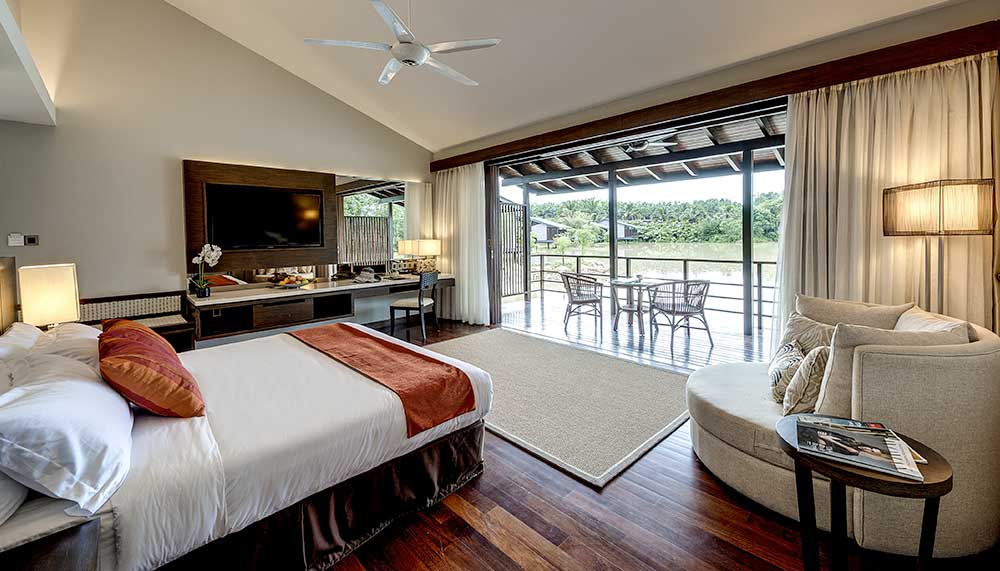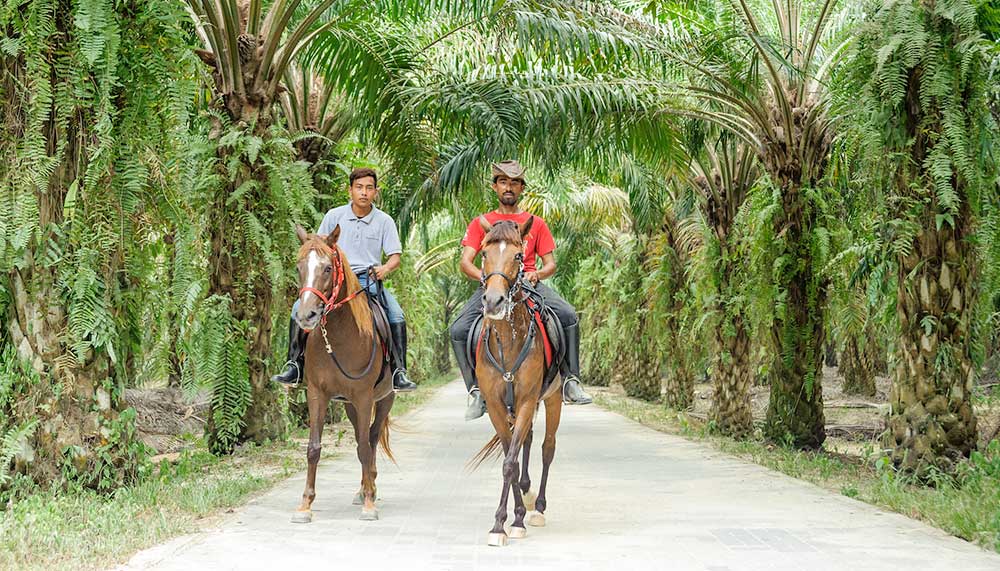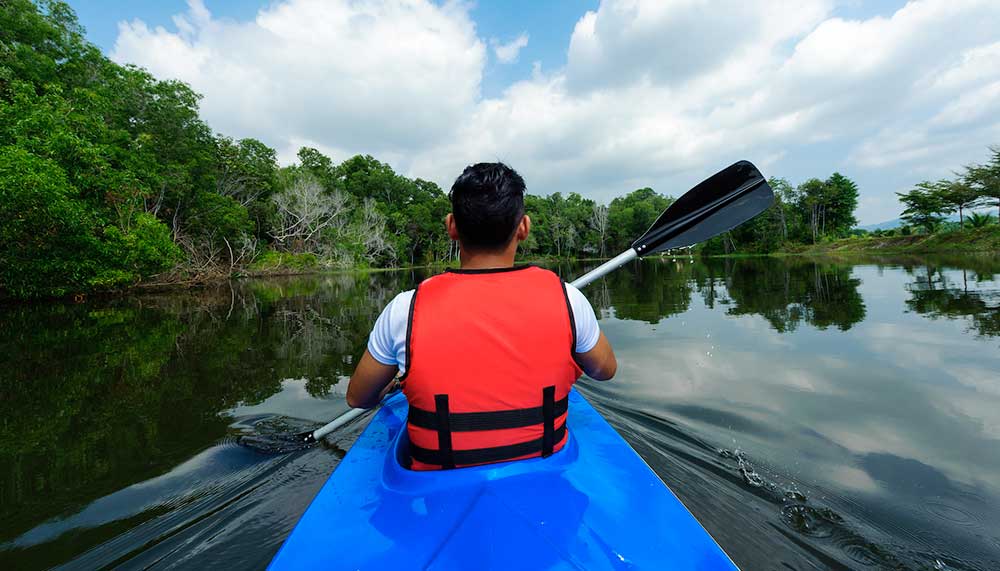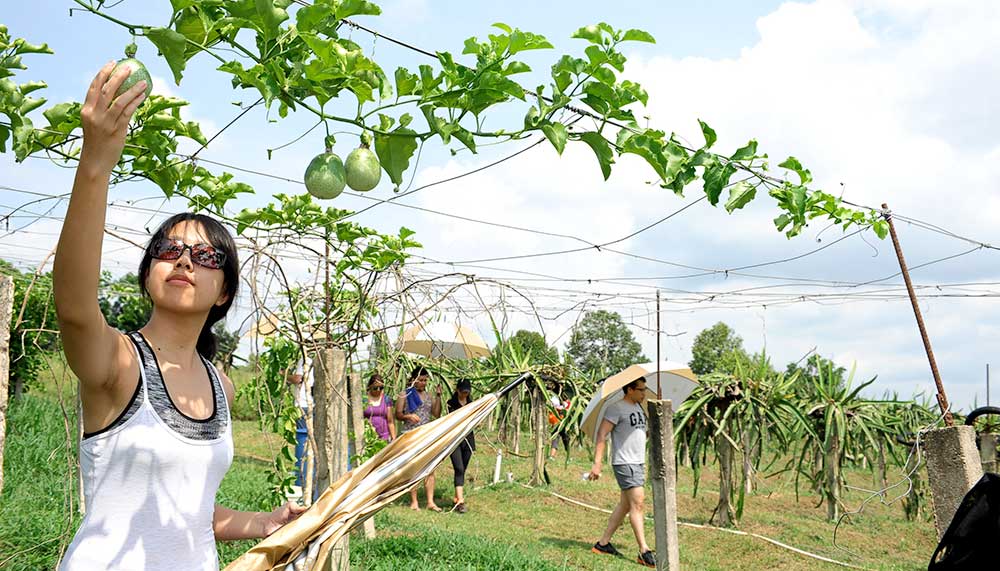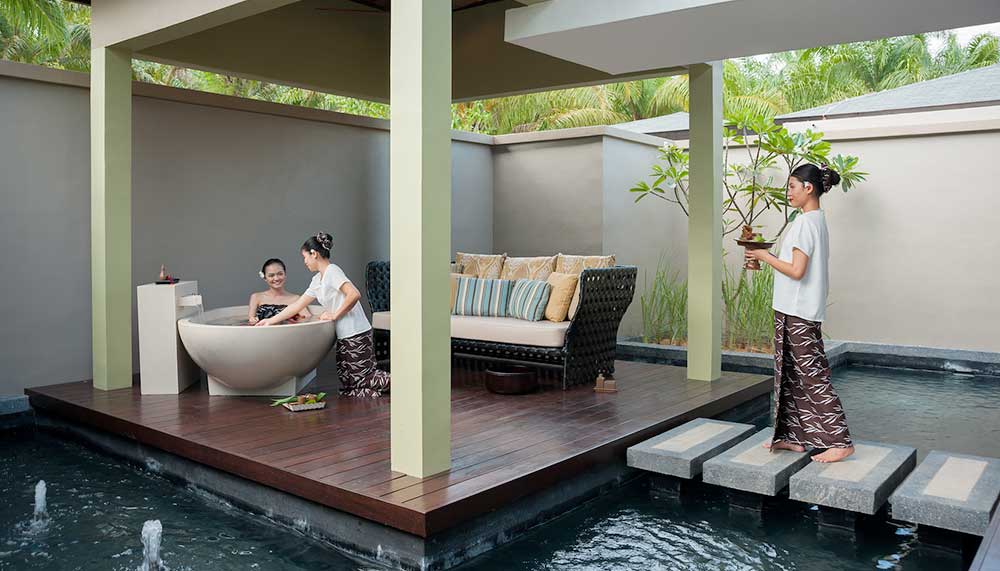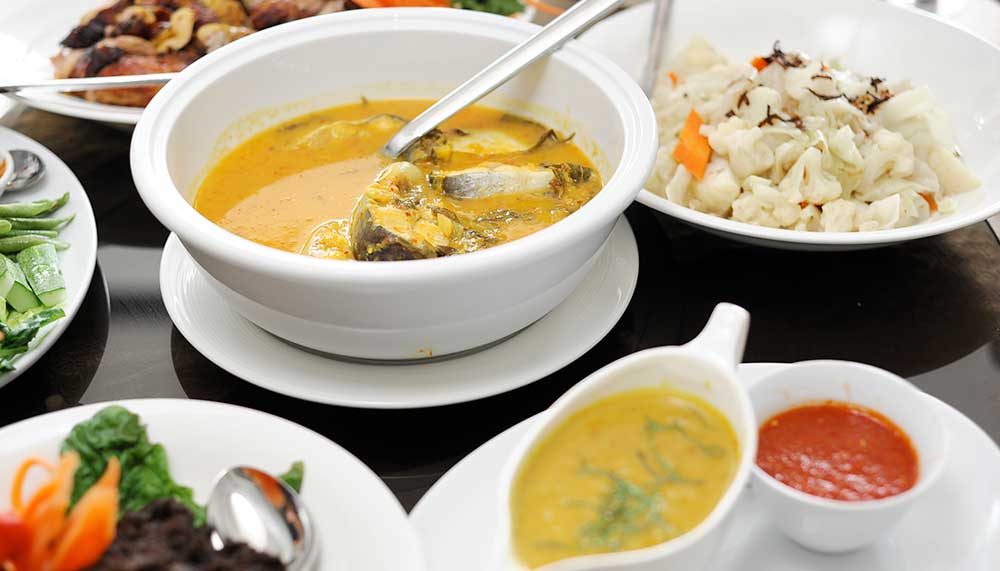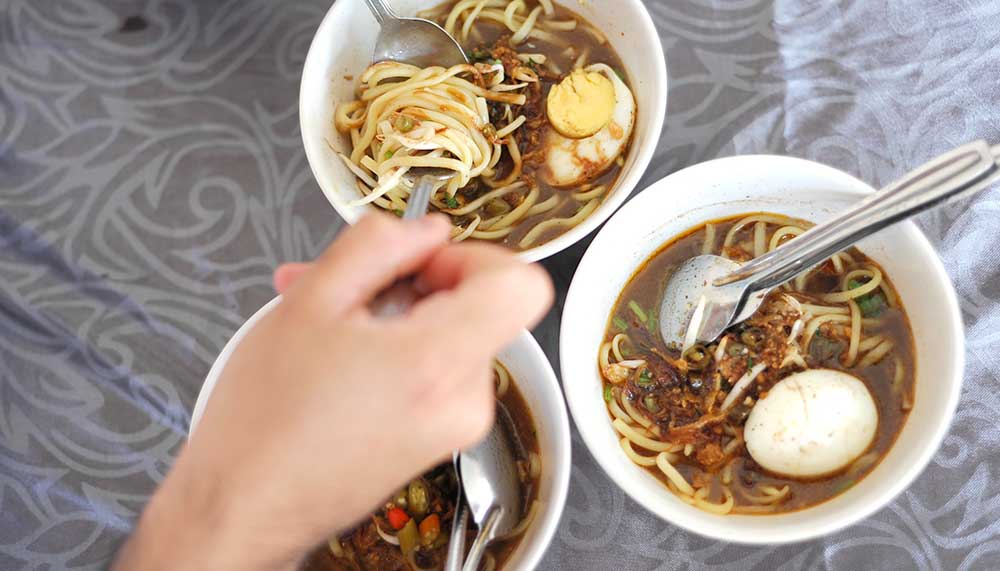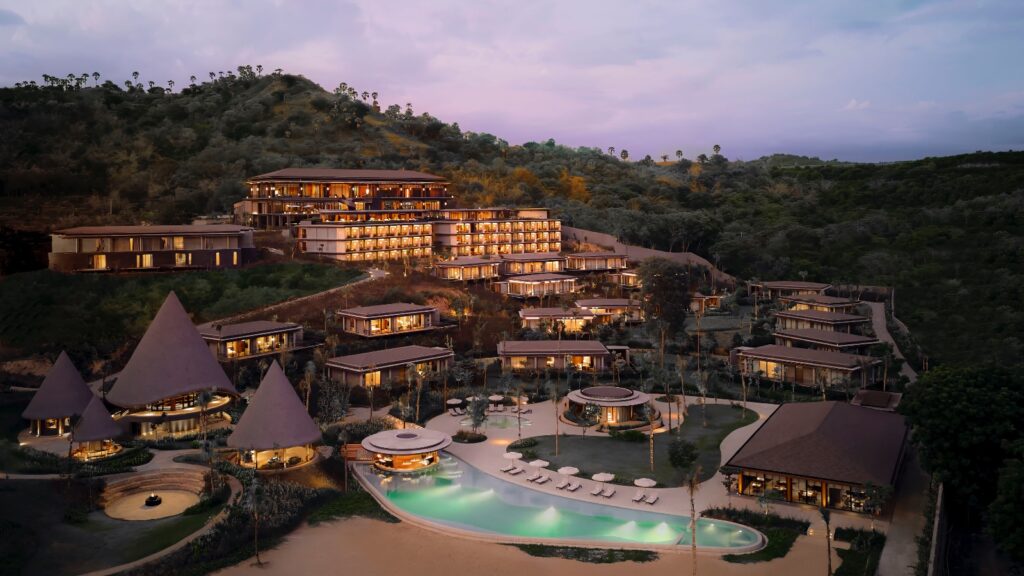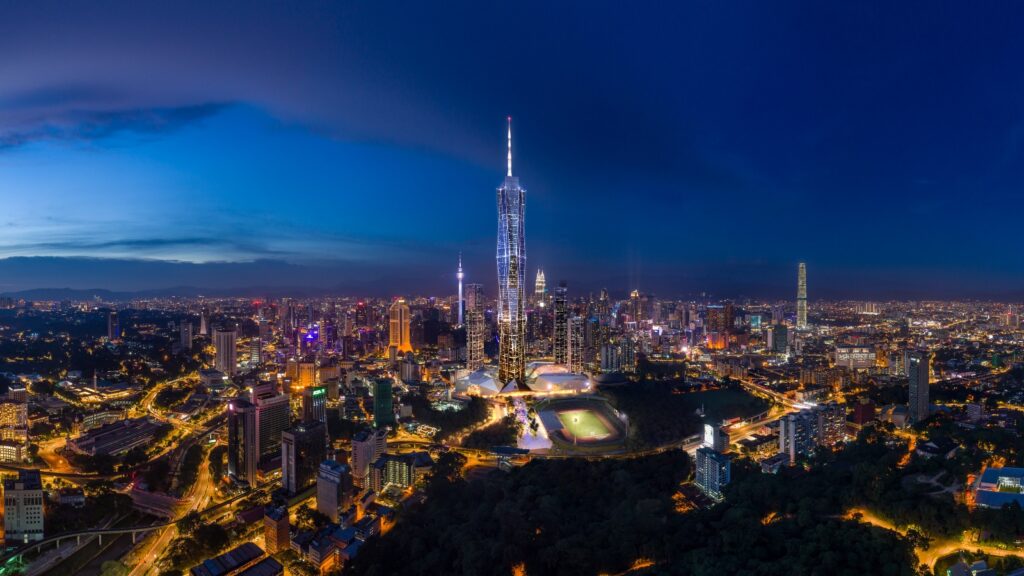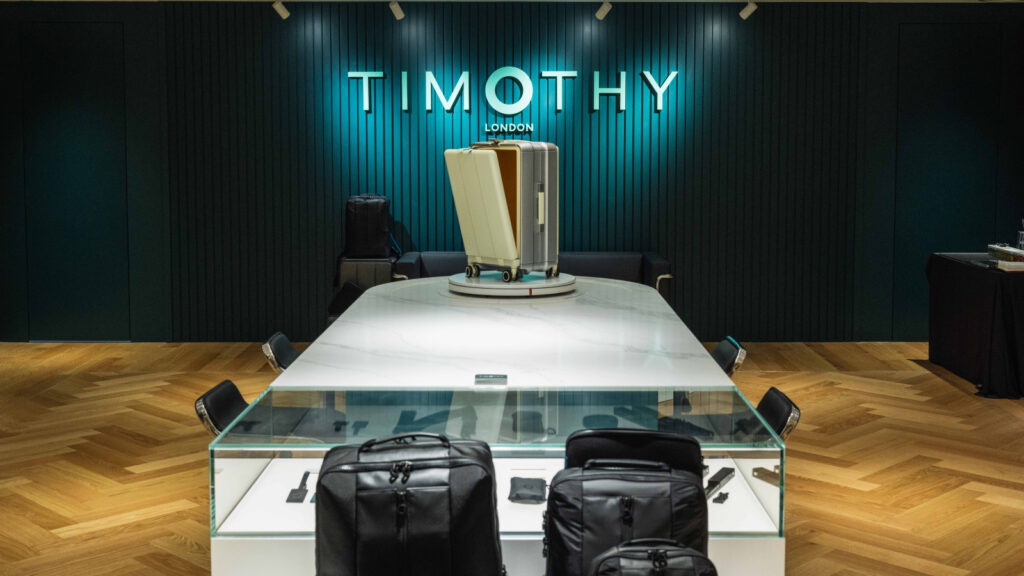Back to nature
The land the Mangala Resort & Spa sits on is rich. Just a stone’s throw away is Sungai Lembing, once known as the El Dorado of the East with the richest veins of tin ore in the world. The area hosted some of the world’s largest and deepest pit mines, and though tin has retreated, the land is still bountiful, yielding the purest hill water that creates the springiest noodles. Various disused tin mining lakes dot this landscape, but the land is hardy enough to support other, newer activities, mainly the versatile fruits of the palm oil tree.
It is around one such lake among the quiet shade of symmetrical palm oil trees that one discovers Mangala. A collection of 31 villas and cottages encircling a central lake, the expansive, low-lying resort recalls the upper echelon of retreats in Bali and the Maldives. Gambang, Pahang might lesser known to the travel itineraries, but the attention to detail at Mangala is still remarkably spot on.
Accommodation is split among three ecosystems. The 11 Jala villas, including a sole Jala suite, are perched on stilts over the lake, where the soft plop of surfacing fish, otters or lizards is the only soundtrack. The 16 Vana villas, including four Vana villas with pools and the expansive Vana suite, are set further back from the water, up a gentle incline at the edge of balmy palm oil trees, each being its own forested cocoon. The four Sara cottages are slightly further afield, surrounding a patch of natural wetlands that support an astonishing number of endemic and migratory species of birds.
The rooms themselves are designed for a thorough pampering, as well as to encourage venturing outside. Wooden floors, spacious sliding doors, generous balconies/verandas and a cool, grey colour scheme allow the natural greenery to command the eye’s attention, an invitation to bask outside in nature. The Vana villas take this a step further, placing the shower and an oh-so-inviting bathtub outside, shielded by fronds of landscaped plants. The design of the entire resort is a lesson in clever tropical architecture. The villas themselves mainly face east, allowing the morning sun to start the day and shielding the scorch of midday. The architectural style is contemporary, focusing on right angles and plenty of open spaces to allow breeze to flow around the land’s contours, walls and slopes in a form of natural ventilation. Geoffrey Bawa would be proud.
Tempting though it may be to remain indoors, exploration is encouraged. Bicycles are provided to all guests, with paths leading around the lake and beyond, to the resort’s stables where four horses roam, right beside a duo of lakes where guests can try their hand at a spot of archery or kayaking in search of whistling ducks and black harriers. Cycling around Mangala’s 60 acres without a care in the world is a treat, and you might discover among the oil palm trees the resort’s resident goose or the prodigious fruit-and-herb patch that supplies the kitchen with fresh produce.
All that cycling burns calories and tires muscles, which is where the Mangala Spa obliges to soothe. Tucked away in a quiet corner of the lake, entrance is through a short reflexology path – to open up and stimulate the feet’s acupressure points – then a comprehensive choice of treatments. The Spa’s Signature Massage is a natural choice, combining deft long strokes and thumb pressure with a candlenut scrub (to smoothen the skin), rejuvenating and reinvigorating.
All the calories burnt exploring Mangala on foot or on wheels need to be replenished, and The Lakeside restaurant obliges. Its menu spans the globe in coverage, with the lamb shank rendang and baked cod being highlights. The same dishes can be replicated on a far larger scale at the neighbouring Banquet Hall, which can hold up to 500 for corporate functions and celebrations. And if you feel like delving deeper into the culinary heritage of Pahang, ask the chefs nicely and they might oblige with some exotic delights like the challenging gulai ikan patin (a curry of freshwater fish cooked in fermented durian), the local Pahang variant of laksa, daging opor pekan (a fragrant dry beef curry) and puding diraja, a recipe from the Royal House of Pahang consisting of golden jala mas strands of egg yolk and the sweet pisang lemak manis banana.
Most hospitality properties have some form of USP as a hook to entice visitors. Beach resorts have the sand and sea, Balinese resorts have their mysticism, city hotels have their location and mountain lodges have their scenery. What Mangala has is its land; turning a barren piece of land with rich history into a rewarding property.
Which is why Mangala was built in the first place – the owner wanted to transform a piece of land that serendipitously fell into his lap from soil where nothing could grow into the verdant jungle it once was. A tremendous amount of investment was poured into soil rehabilitation and it still continues. Listen to Datuk Franky talk of the future and you can almost imagine the upcoming skyline of tropical fruit and hardwood trees adding vertical interest to Mangala. That, of course, is yet to come, and is possibly the most stirring thing about the resort – that Mangala, the Sanskrit word for ‘well being’, will not be a static property, but a living project that will continue to grow and blossom as the jungle returns and thrives.

